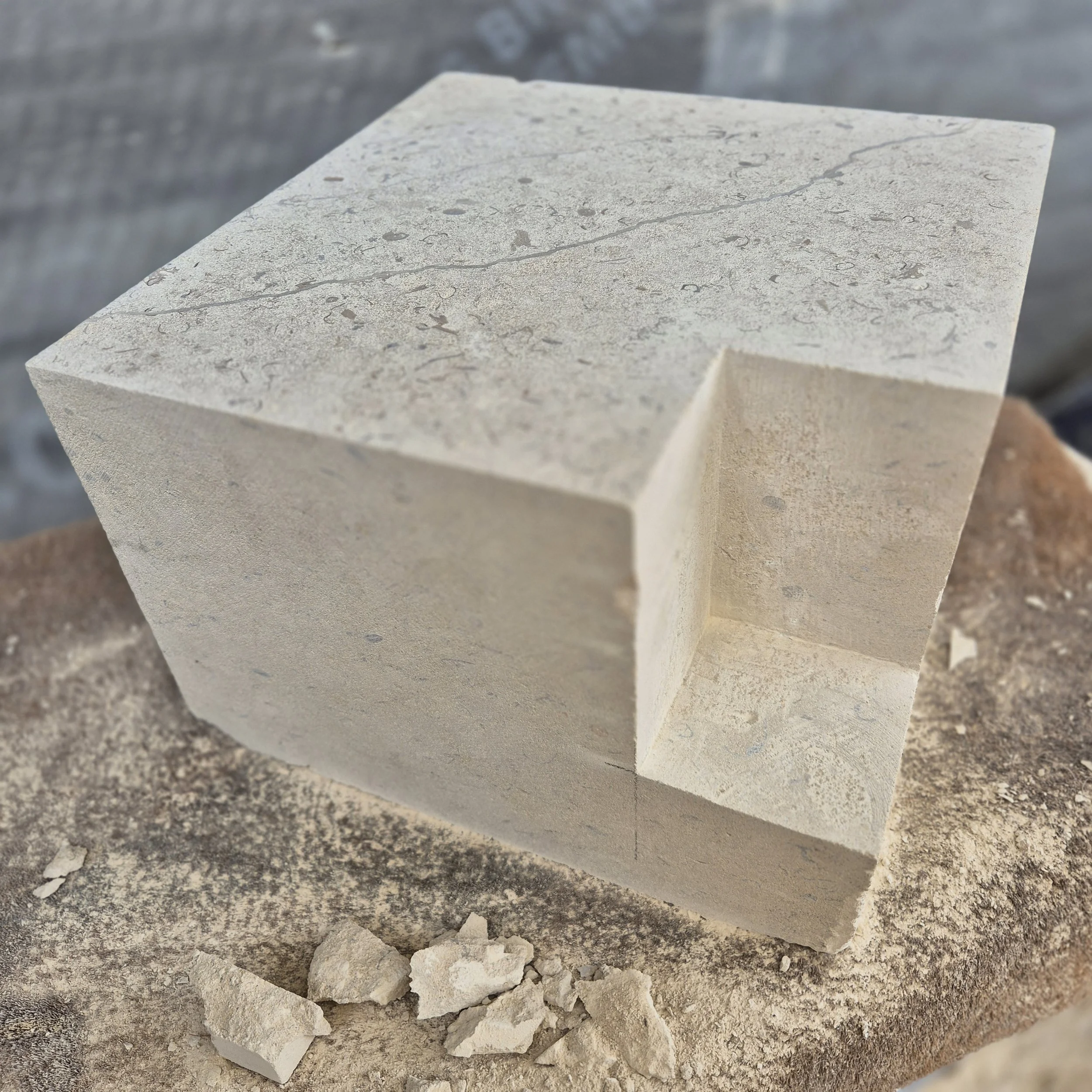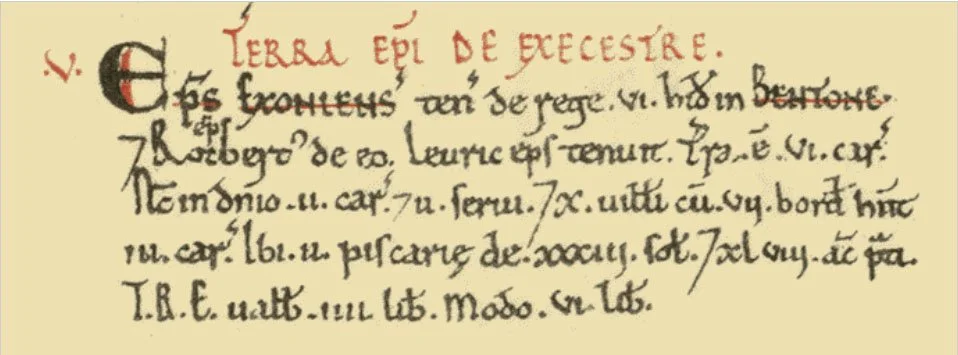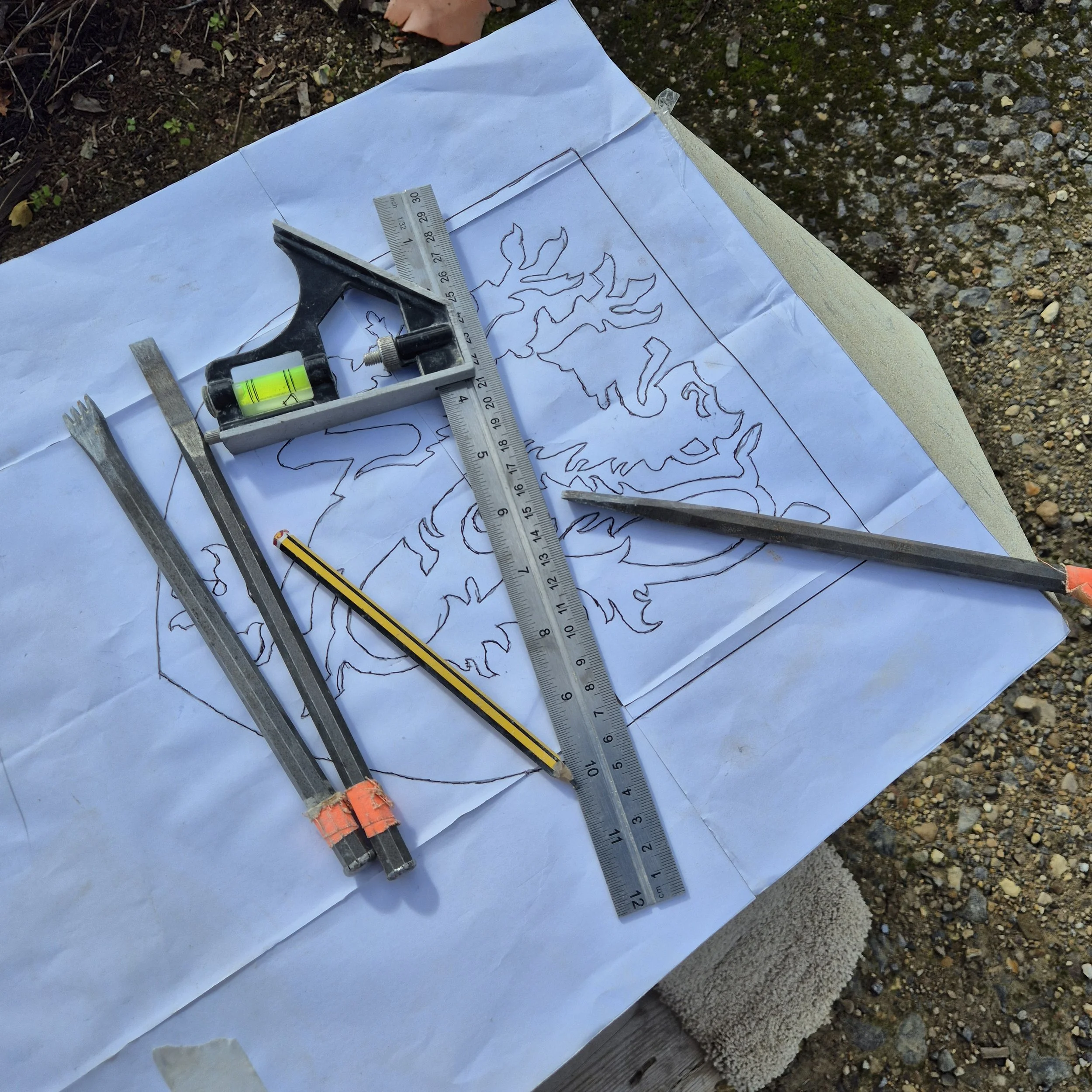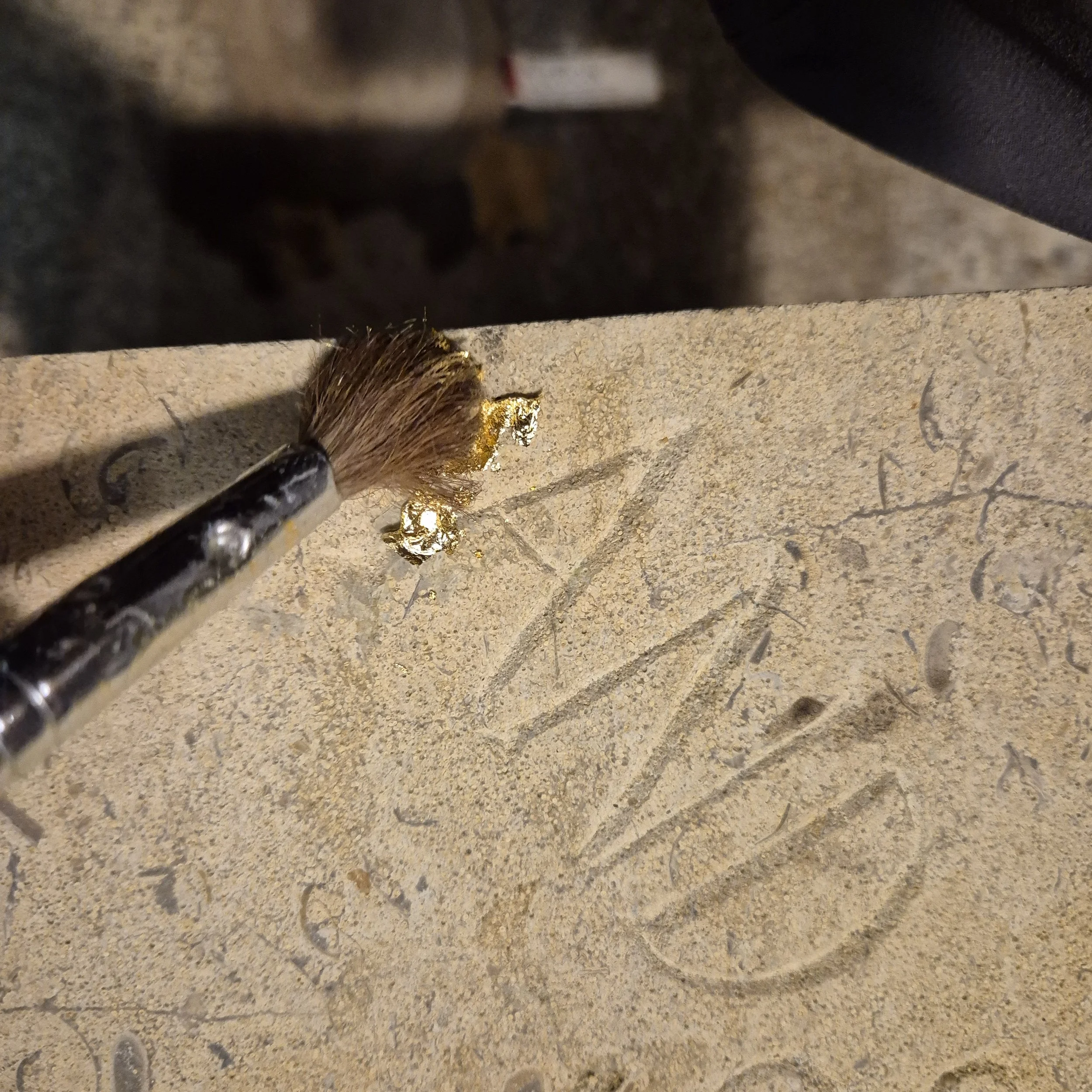The Bampton Obelisk
Initial stages
A commission from Bampton Parish Council, Oxfordshire, for a major piece of sculpture for the village, using Section 106 Public Art funding.
In late 2024 I was approached by Andy Cutler, a member of the parish council in Bampton, Oxfordshire, the village where we have lived for the last 20 years. The council had been given access to some funding through Section 106 - would I be interested in being commissioned for a piece of public art for the village? Yes, I absolutely would! A very open brief - come up with a design for something for the centre of the village, in the gravelled area by the Town Hall. Include something to do with Morris dancing - Bampton celebrates its role in the history of this art and boasts three teams, all of whom dance across the village on Spring Bank Holiday Monday. The rest was up to me.
The first thing to consider was a suitable form - the big picture. Much of my work centres on abstract interpretations of natural forms, and whilst I’d have loved to have done a series of red kites wheeling around one another at the sort of scale to suit a piece of public art, it didn’t really seem very Bampton, and certainly didn’t address the brief. Given the central position of the piece, a response to the idea of the market square seemed important. But what did the market square look like before the Town Hall was built in 1838? No photos, of course, and I couldn’t find a record anywhere. Witney’s Buttercross is typical of rural market stands, and so I started there.
Witney Buttercross (C16/17)
Sketching either from photos or in situ helps me to understand the shape, impact and construction, and makes a lasting record of the development process.
This form - steps leading to a vertical - occurs much locally. Bampton’s own war memorial and so many more, for example, and the stumps, crosses or markers in a number of villages - Lew and Coleshill for example - have this structure too.
Lew Village Cross
Remains of a late medieval village cross, head of the cross missing.
This sort of structure would have impact and historical validity, and would mean that I could use the various plane surfaces to decorate or inscribe with historical and current cultural references. There’s so much going on in this village that I’d been thinking about trying to get the unique character of the village into the piece somehow. Morris dancing was part of the brief, but so much more goes on here that I wanted to express and include. The history of the village is fascinating too, and not celebrated or noted as much as it could be. Until I started looking into it, for example, I had no idea that Bampton is in the Domesday book or that there were important battles here. People should know this stuff!
So I came up with a design, submitted it to the Parish Council, and waited. Whilst the PC were quick to give approval in principal to the design, securing approval at higher level to release the Section 106 funds took a little longer. I had to price accurately too - cue discussions with local builders Millrick Construction about a foundation concrete base, installation of the piece and securing it, and with various stone suppliers to decide on the right stone. As I mostly work for exhibition rather than to commission, I don’t usually have to price a piece before I pick up the chisels, so I had to think hard about this, and had to work to a budget.
Evolving rough design sketch
This was probably the third iteration of this general idea. A two-step pedestal topped with a square-based obelisk. Text on the base to give some history of the village. Images on the second layer to detail some of the current and recent culture - The Shirt Race, for example. The obelisk to have four faces bearing coats of arms related to Domesday, morris dancers and scenes of and around the village. Summit of the obelisk to be highlighted and protected with 24ct gold leaf to echo the weathercock on the top of St Mary’s Church, Bampton. I submitted this and more drawings for approval in December 2024.
In January 2025 the Parish Council approved - we were in business.
Selected Stone
First phase of collected pieces of stone ready for carving.
Bath Hartham T2 Limestone
Detail of stone, showing fossiliferous nature This piece is approx 300mm square and will be the top surface of a block - I select the orientation to give the best exposed surfaces and the most suitable for carving. It provides real interest in addition to the carved details. Hartham T2 is a hard, durable Bath limestone with excellent weathering properties. Stone more local to Bampton is not suitable - it would not give the longevity that such a piece needs and, more crucially for me, is not suitable for detailed carving, but this is a Cotswold limestone. I did not want to go further afield - the obelisk should be made from relatively local stone, I felt. Advised and supplied by K&M Masonry in Corsham, Bath.
The Design in Detail
The First Layer - History of the Development of the Village
I wanted to give a very selective potted history of the way that the village had progressed from the earliest records to more recent times. At the very beginning, there must have been a small group of people settling by the water of the Shillbrook, meandering through the woodland that became the bush in Bampton-in-the-Bush. Using Shillbrook as the starting point, I came up with the idea of text meandering across the stone, with points in the village’s history taken from the Parish Council’s website and from wider reading. My wife Jane, is my crucial assistant and helpful critic in laying out text, and between us we set out the text below. I like to use grouping of letters, sharing of verticals and other flourishes that make the text unique. Some of these may be seen in the images . Sculptors and lettercutters have used these devices for centuries to help in fitting phrases onto stone, or simply because they look more interesting. Each stone block in this layer - eight all told - weighs about 65kg.
The text reads:
♦ AND SHILLBROOK STILL FLOWS ♦ IRON AGE ♦ ROMAN ♦ SAXON ♦
BEAMTUNE ⚔ AD614 ♦ DOMESDAY BOOK 1086 ♦ ST MARY’S C10 - C13
♦ HAM CASTLE 1315 ♦ CROMWELL ⚔ CIVIL WAR 1645 ♦ TOWN HALL 1838 ♦
BAMPTON STATION 1873 ♦ MILLENNIUM WOOD ♦ BAMPTON-IN-THE-BUSH
The diamond-shaped spacers will be gilded in 24 ct gold. The crossed swords represent the Battle of Beamtune, as the village was then called, and a skirmish during the Civil War when Cromwell and his troops were in Bampton. Bampton-in-the-Bush is the name by which the village is sometimes known, a name that I have reflected in the designs on the main part of the Obelisk.
Selecting text for this was a long process - there was so much that could be in there! In discussion with others in the village I tried to focus on interesting, perhaps not widely known, historical information, and the physical additions that at the time helped to shape the village: the church, still central to the village and its life for many; Ham Castle, which would have resulted in an increase in the size and importance of the village; the Town Hall, reflecting the increased importance of Bampton becoming, for a while at least, a town rather than a village; the Railway Station, which would have brought greater business and prosperity to Bampton and more recently, the Millenium Wood (Shillbrook Wood) which marks that date for us and is a lovely amenity used by many.
The Second Layer - Bampton Today
Above the text and below the Obelisk itself, I wanted a series of images that would reflect Bampton today. The Obelisk will have its morris dancers - but there’s so much more going on. I had, again, a great deal to select from, both the everyday and special moments within the year. I know that I missed out a great deal - I’m sorry if it’s your particular favourite! - but I tried to have a balance that would speak to everyone from the village in some part, and the image had to be something that could be represented effectively in carved stone. The images I decided on were: the Donkey Derby, that great day in August that brings in the children; Aunt Sally, played in the pubs with a league named for the village; the Shirt Race of course, represented as a pram and a pint which were the original must-haves; our fire station, honouring the work of those local men and women who give their time and risk their lives for our safety; the annual Remembrance Parade, so well attended, in memory of all those from the area who have served and given their lives over the years; sports clubs of Bampton including cricket, football, tennis and archery; a map of the central roads of the village and finally an image representing the dogs and dogwalkers of the village - of which I and my dogs are part. The four blocks making up this layer weigh in at about 80kg. Each will have a section cut out at the back to take the ‘keystone’ at the bottom of the obelisk itself, tieing the structure together.
The Obelisk Itself - Bampton in Domesday, Bampton Views, Bampton Morris
Although the original brief from the Parish Council was very broad, Andy Cutler and I agreed that a major reference had to be made to Bampton’s long tradition of Morris Dancing. The chief display part of the piece, the sides of the obelisk itself, were clearly the place to celebrate this aspect of the village. I also wanted to use the information that I’d found from the Domesday Book about the village. In 1086 Bampton had a recorded population of 89 households, putting it in the largest 20% of settlements recorded in Domesday, and is listed under four owners in Domesday Book. The heraldic shields of these owners give a nicely graphic top to the obelisk. Research gave me the shields for King William I, Robert D’Oilly and the Bishop of Exeter St Peter. However Bishop Odo of Bayeaux, the fourth owner of the village, had no heraldic record at that time. Further research led me to Lord Ilbert de Lacy who ruled Odo’s land in this area for him, and he thankfully did have a suitable shield. King William I is, of course, William the Conqueror, who commissioned the Domesday Book. Robert D’Oilly was responsible for building Oxford Castle and a number of bridges in Oxford as the County’s High Sheriff. He’s commemorated in Bampton with D’Oilly House in Cheyne Lane. The Bishopric of Exeter St Peter is still responsible for the advowson (right to present clergy) of St Mary’s Church in Bampton, and there is Exeter House on Cheapside.
Excerpt from the Domesday Book, 1086
Describing the land of the Bishop of Exeter in Bemtone.
Households: 10 villagers. 7 smallholders. 2 slaves.
Ploughland: 6 ploughlands. 2 lord's plough teams. 3 men's plough teams.
Other resources: Pasture 48 acres. 2 fisheries.
Annual value to lord: 6 pounds in 1086
At the bottom of the Obelisk itself I decided to have four images of Bampton views. Two will be of key and readily identifiable buildings in the village - the Grammar School, now the library, and the Church. To contrast with these I wanted to reflect on the name Bampton-in-the-Bush. In early times Bampton would very much have been that - surrounded by woodland. As agriculture took over, woods would be cleared to leave fields, and as anyone who walks around the bounds of the village knows, that is how we see the village from a distance now, embedded in farmland. However, through the farmland, protecting and defining the village, there remain trees. The second two views then will show the village across farmland with its coat of trees. Bampton, still very much in the Bush. These are quite a challenge to carve as a great deal of the image will be featureless, but I hope to capture the views recognisable to us from Glebelands meadow, on the way back from The Plantation woods, and from Colin Rouse’s Backhouse Farm fields, looking towards Primrose Cottages. The RAF made an appearance, as they so often do, whenever I photographed, so our neighbours from Brize Norton feature in the sky.
I took a great deal of photos, selected my favourites and drew them out in full size on paper, before transferring the designs to the stone using carbon paper. This is unusual for me - I often work straight into the stone without drawing, or draw freehand on the stone before carving, but accuracy was important to me here.
The original request from the Parish Council was for morris dancing to be a main focus for the piece. Each face of the Obelisk therefore features a silhouette of a dancer. I sourced images from my own photographs of morris day in Bampton and from the websites of the three teams who dance here every year in May, developed sketches and sought advice from Bampton dancers.
I chose to carve in silhouette rather than with relief detail for a number of reasons. I wanted the image to have simple impact without distracting features, silhouette would contrast nicely with the more detailed landscapes, and it is very hard to get faces right! The chosen silhouettes were then scaled up to full-size paper and transferred to the stone, then cut down to the width of the chisel that I used most on this piece, my favourite 10mm lettering chisel.
Finishing Touches
Before installation, the obelisk needed a bit of bling. In between each phrase on the base layer I had carved diamonds as separators. To give a little lift to that area I wanted to gild these using gold leaf. This would help to attract attention to the area of the piece which would catch the least light. FInally I had planned to gild the very top of the obelisk. This would give a nod to the gold weathercock atop the church spire and also help to protect the stone from the rain. It would also be nicely eye catching for the whole piece. Gilding involves the use of a special waterproof glue known as size. This is then left to dry for around 90 minutes before applying the gold leaf. I chose to use 24ct gold - the purest, and most expensive, form of the metal. Any less pure and the colour would not be true to the church’s weathercock, and the impurities (18ct gold, for example, is 75% gold and 25% other metals, usually copper and silver) would tarnish over time.
The little diamonds, being cut into the stone, needed to be made from loose leaf. This soft, floaty material would fit into the diamond cavities and ‘find’ the size. The top, plane surfaces could be made from transfer leaf, which is mounted on a waxed paper backing and much more easily pressed onto the size without loss.








































































